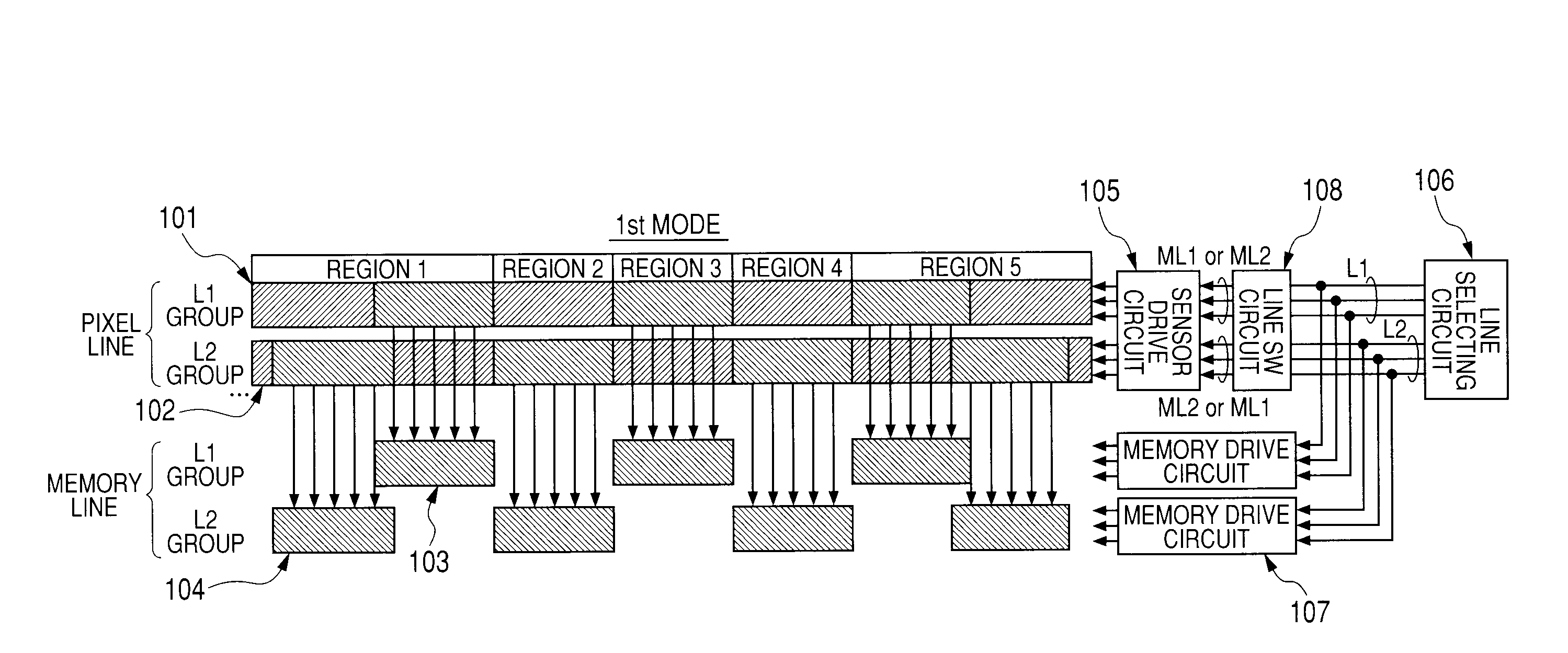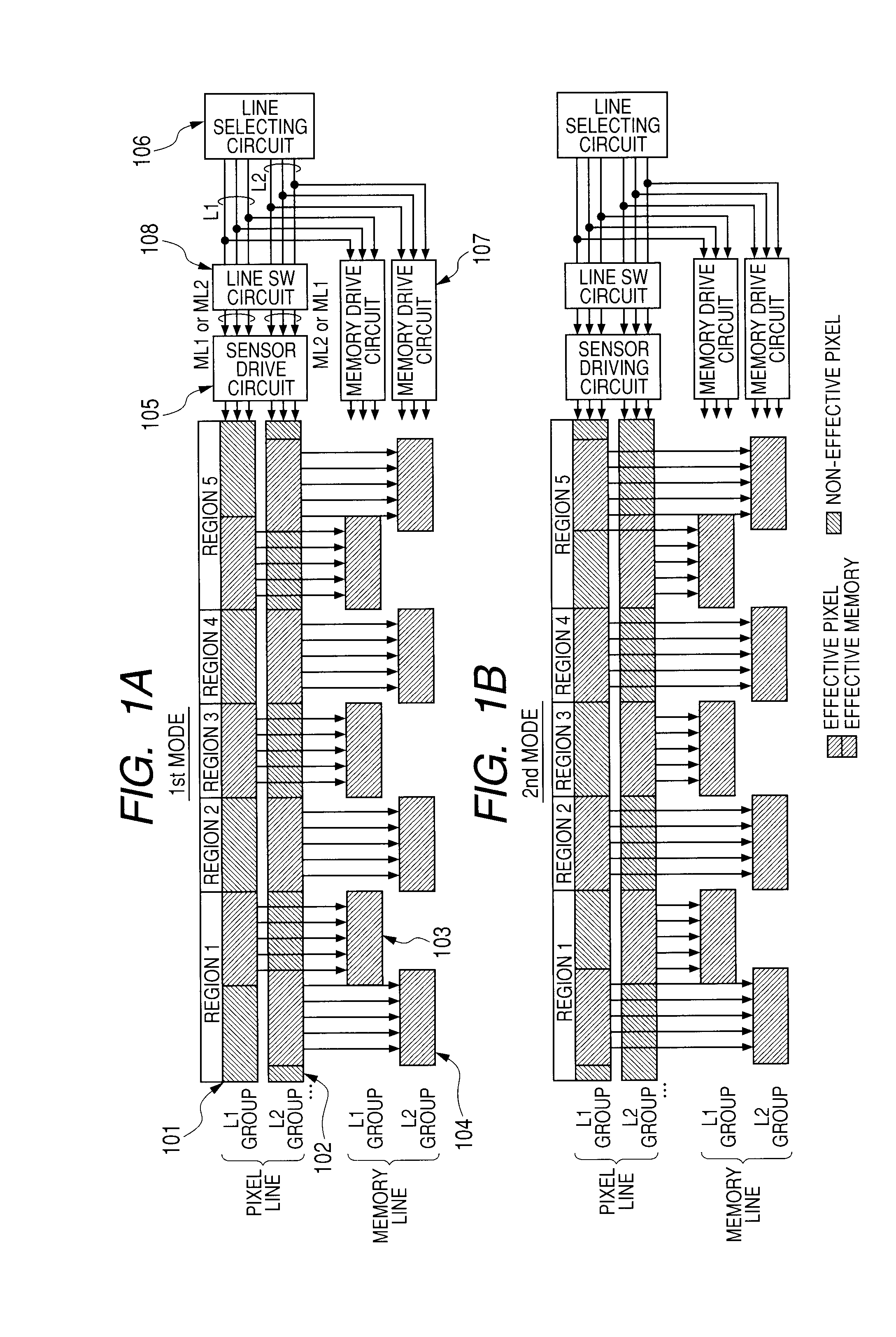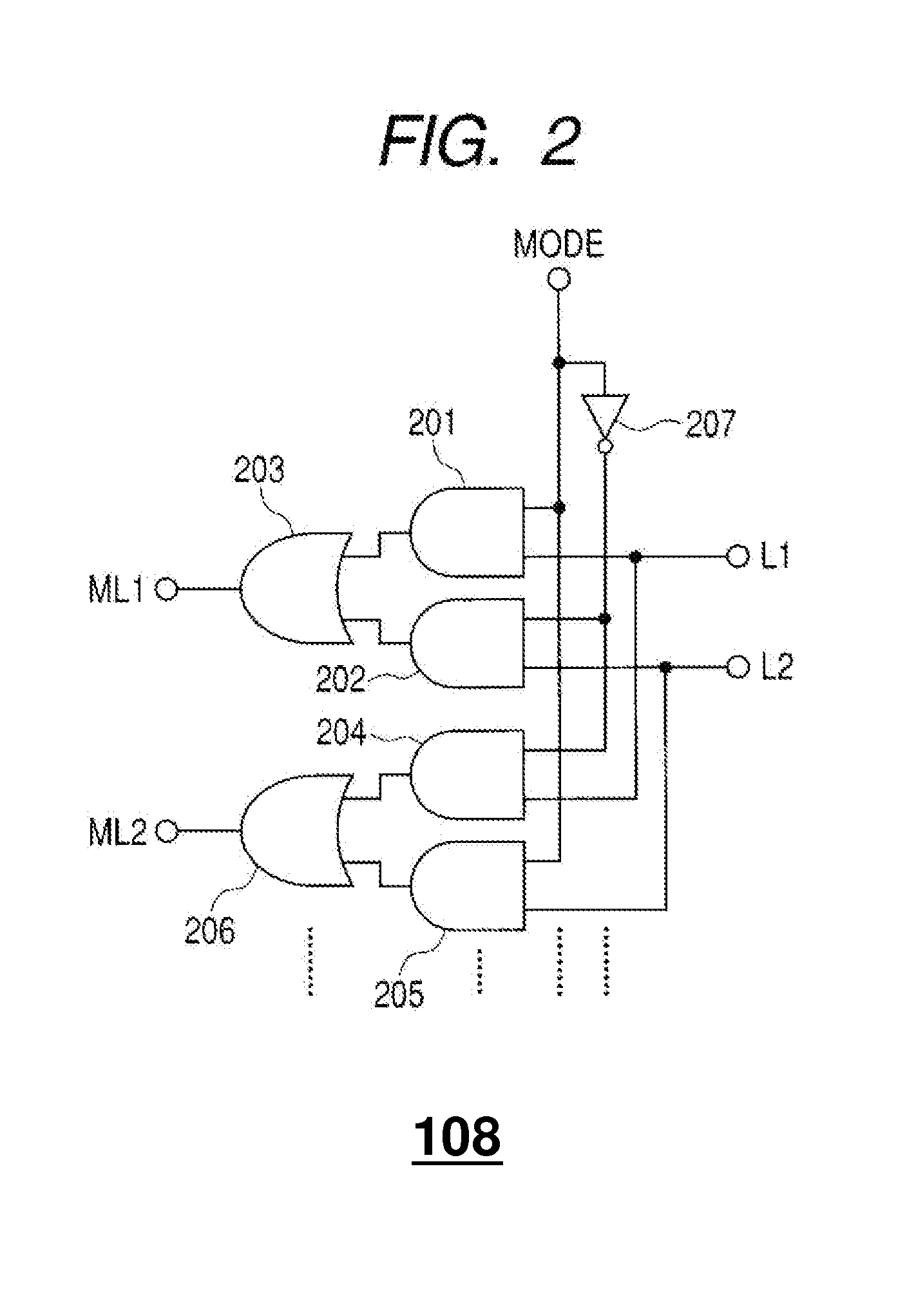Photoelectric conversion apparatus
- Summary
- Abstract
- Description
- Claims
- Application Information
AI Technical Summary
Benefits of technology
Problems solved by technology
Method used
Image
Examples
first embodiment
[0037]FIGS. 1A and 1B are a diagram illustrating block segmentation in an area-type AF sensor employing a photoelectric conversion apparatus according to a first embodiment of the present invention. The photoelectric conversion apparatus may comprise an area-type AF sensor as shown in FIG. 5 and a line selection switching circuit shown in FIG. 2, as an example.
[0038]FIG. 1A is a schematic diagrams for describing a first mode in the first embodiment, and FIG. 1B is a schematic diagram for describing a second mode in the first embodiment.
[0039]The area-type AF sensor illustrated in FIGS. 1A and 1B includes a first line sensor L1 group 101, a second line sensor L2 group 102, a first line memory L1 group 103 and a second line memory L2 group 104. The area-type AF sensor also includes a sensor drive circuit 105, a line selecting circuit 106, memory drive circuits 107 and a line selection switching circuit 108. A control circuit is formed by the sensor drive circuit 105, the line selectin...
second embodiment
[0065]FIG. 4 is a schematic diagram of an optical system of a single-lens reflex camera equipped with a TTL-SIR (Through-The-Lens Secondary Image Registration) auto-focus system, which employs a photoelectric conversion apparatus for detecting focus according to an embodiment of the present invention. The camera illustrated in FIG. 4 includes a taking lens 40 for temporarily forming an image of a subject on a film or an image sensor, and a quick-return mirror 41 for reflecting light on a finder screen 42, which is a half mirror that transmits several tens of percent of light. The camera also includes a sub-mirror 43 for guiding light to the AF system, a photoelectric conversion apparatus for detecting focus 44, a secondary imaging lens (glass lens) 45 for re-forming an image of a subject on the AF sensor, a reflecting mirror 46 that guides light to the AF sensor 44, a focal plane shutter 47, and a film or image sensor 48. An optical axis 49 is also indicated in the Figure.
[0066]In t...
PUM
 Login to View More
Login to View More Abstract
Description
Claims
Application Information
 Login to View More
Login to View More - R&D
- Intellectual Property
- Life Sciences
- Materials
- Tech Scout
- Unparalleled Data Quality
- Higher Quality Content
- 60% Fewer Hallucinations
Browse by: Latest US Patents, China's latest patents, Technical Efficacy Thesaurus, Application Domain, Technology Topic, Popular Technical Reports.
© 2025 PatSnap. All rights reserved.Legal|Privacy policy|Modern Slavery Act Transparency Statement|Sitemap|About US| Contact US: help@patsnap.com



